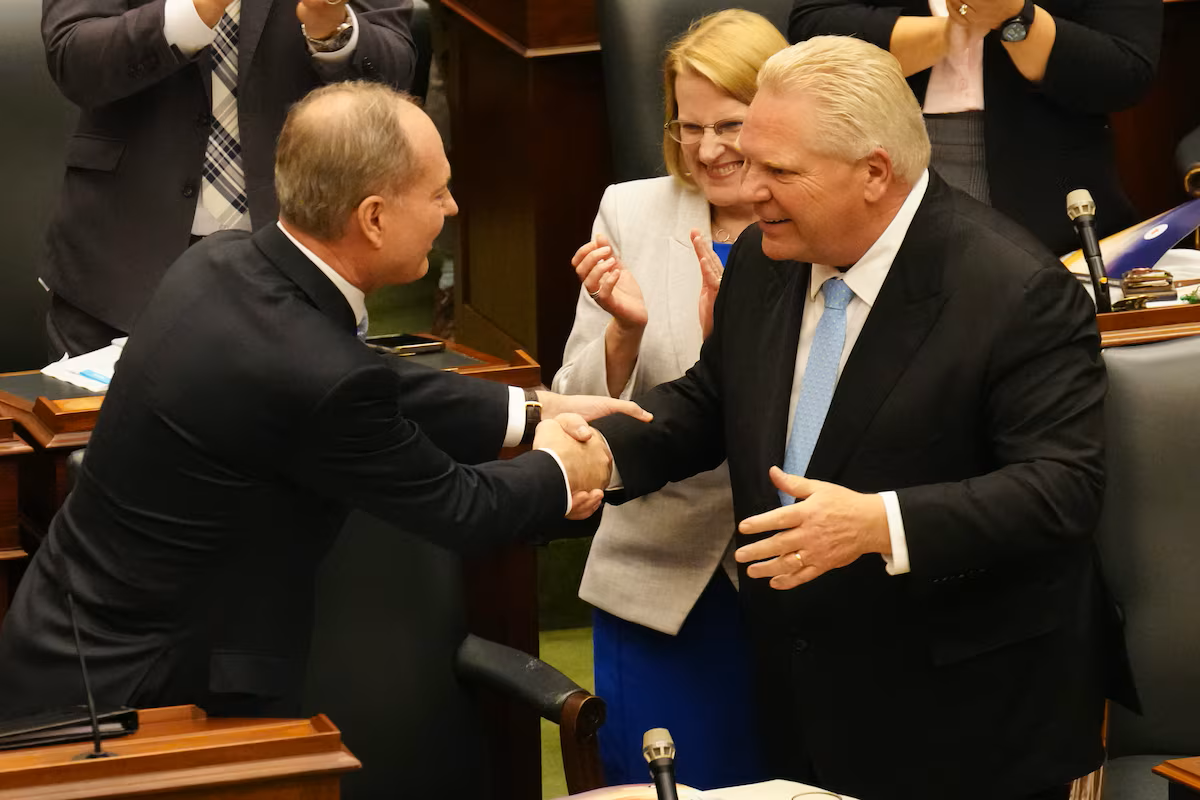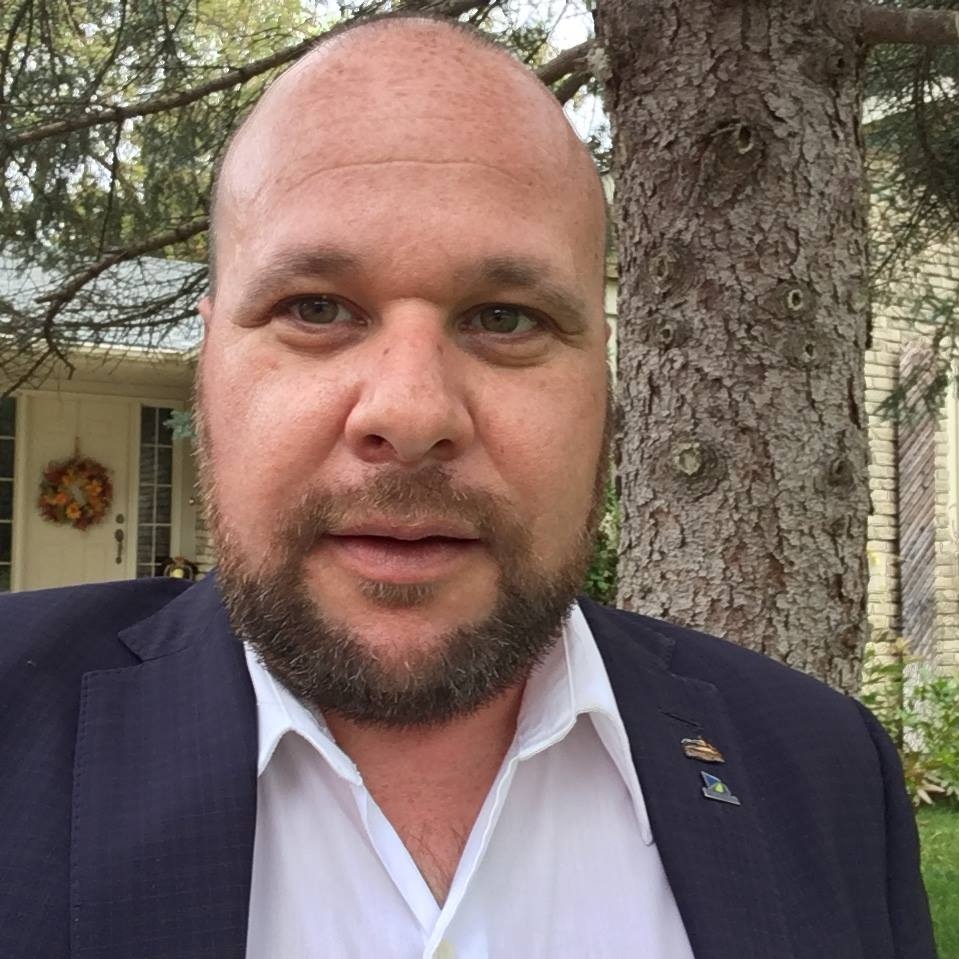Ontario Releases 2025 Provincial Budget
Ontario Releases 2025 Provincial Budget
By: Darryl Wolk
May 2025
 |
| Photo credit: Chris Young/The Canadian Press |
Finance Minister Peter Bethlenfalvy released the 2025-26 Ontario Provincial Budget titled "2025 Ontario Budget: A Plan to Protect Ontario." The document revises economic growth projections downward and this year's deficit projection upward from earlier projections in the Fall Economic Statement.
Housing starts were also projected downward as the government is well below its housing supply targets. Housing prices were also expected to decline slightly with no price growth in the coming years.
With an expected economic downturn on the horizon, the Ontario Government is squarely focused on supporting the economy.
Read more about OMSSA's observations and comments on the 2025 Ontario Budget.
The deficit for 2025-26 is expected to be $14.6 Billion, and overall spending in the 2025-26 budget will be $232.5 Billion with revenues expected to be $220 Billion. The government has also set aside a $3 Billion contingency fund due to economic uncertainty with the US trade war.
The Province hopes to return to balance in the 2027-28 fiscal year with a projected $7.8 Billion deficit for 2026-27. Economic growth is projected to be weak at 0.8% in Ontario next year, down from a previous forecast of 1.9%. The unemployment rate for 2025 is expected to be 7.6%. Opposition parties were critical that the budget failed to adequately invest in people and needed services such as housing and health care.
While the government provided new short-term spending to address economic uncertainty, they still plan to balance the budget in 2027-28 and is relying on the federal government to support its plans. In a letter to Prime Minister Mark Carney, Premier Ford listed the Ring of Fire, nuclear energy, James Bay deep-sea port, the Highway 401 tunnel, and GO Transit 2.0 as Ontario's top priorities for federal support.
The budget did not contain major new measures in early years and child care, homelessness, community housing, or social assistance. Instead, it focused heavily on capital projects including hospitals, highways, public transit, schools, roads, and other infrastructure.
There was no increase to social assistance rates or the shelter allowance. The budget came up short on significant announcements in the areas of supportive housing, community housing and a new fiscal deal for municipalities. There was no significant investments to address child care expansion or workforce challenges.
The "Safer Municipalities Act" was referenced, along with the previously announced $75 Million attached to the bill, in 2024 when it was first introduced. This legislation was also referenced during the election campaign and Throne Speech signaling the provincial government strongly intends to move forward with Bill 10 despite concerns.
The budget did include HART Hub expansion. The budget included a chapter called "Cleaning Up Our Streets" that focused on tough on crime measures and protecting borders. This chapter included references to the encampment legislation, HART Hubs, and support for human trafficking survivors. This signals the provincial government sees these issues under a justice system lens rather than a human rights based approach.
OMSSA would prefer an approach that addresses the root causes of homelessness and provides the necessary resources to end chronic homelessness and adequately house those currently living in encampments.
Municipalities starting in 2026 will have an option to reduce the municipal property tax rate for affordable rental units by up to 35% to incentivize rental construction. Reducing property taxes or development charges will have an impact on municipal revenues required to pay for the infrastructure that supports growth. On housing supply, municipalities should be concerned about the provincial focus on development charges and municipal approvals.
The budget has targeted supports for various economic sectors including nuclear, critical minerals, automotive, wine, forestry, agri-food, tourism, and invests in retraining and skills development to support laid off workers. This was meant to respond to the slowing economy, US tariffs and impact on Ontario. There were minimal investments in social infrastructure as part of this new spending.
OMSSA will work towards positioning our advocacy within an economic lens while advocating for solutions impacting health and human services. The most vulnerable will be especially impacted by an economic downturn, cost of living increases, job losses, and a strong social safety net will be needed to support those impacted now and in the future.
The Association is working on an advocacy strategy for 2025 and beyond to help navigate these uncertain times and ensure that the voice of our Members is heard by the federal and provincial government. We will continue to advocate strongly for municipal, health and human services issues impacting local communities. OMSSA staff will continue engaging frequently with our Member networks to ensure we remain focused on the top priorities of our membership.
Budget Highlights Impacting OMSSA Members (wording pulled from the budget document):
"Investing more than $30 billion over the next 10 years, including approximately $23 billion in capital grants, to support new and redeveloped school and child care projects. As part of the government’s ongoing efforts to improve and modernize existing schools, Ontario is investing close to $2 billion in the 2025–26 school year to repair and maintain schools, which will foster safe, healthy, accessible and supportive learning environments."
"Doubling down on the province’s efforts to build, including the most ambitious capital plan in Ontario’s history, with planned investments over the next 10 years totalling over $200 billion, including over $33 billion in 2025–26. Highlights of the 10-year capital plan include nearly $30 billion to support the planning and construction of highway expansion and rehabilitation projects, approximately $61 billion for public transit, approximately $56 billion in health infrastructure and investing over $30 billion to build more schools and child care spaces."
"Investing an additional $400 million in the Municipal Housing Infrastructure Program and Housing-Enabling Water Systems Fund in the immediate term, to address high demand for these existing programs to help build the local infrastructure needed to make way for new homes."
"The Ontario Community Infrastructure Fund continues to fund critical infrastructure, including roads, bridges, water, and wastewater projects for eligible small, rural and Northern communities each year. The government will provide $400 million to 423 small, rural and Northern communities across Ontario in 2025."
"HART Hubs will add an estimated 560 highly supportive housing units, in addition to addiction recovery and treatment beds, that will help thousands of people each year transition to more stable long-term housing. The government is also investing more than $303 million over the next three years to stabilize the community-based mental health and addictions services sector. This commitment will provide a four per cent increase in the sector’s base funding to support community-led and delivered mental health programs."
"To help municipalities provide vulnerable people living in encampments with appropriate short- and long-term housing alternatives, the government invested $75.5 million in 2024–25."
Resources
For more insights, visit the following resource links:
About the Author

Darryl Wolk is Manager of Policy Development and Public Affairs for the Ontario Municipal Social Services Association. Darryl started with OMSSA in 2017. He has over ten years of government relations experience and graduated with an MBA from the University of Windsor in 2004. Darryl appreciates the opportunity to advocate and consult with Ontario’s municipal service managers, province and federal government to advance priority issues in the health and human services sectors.
Blog categories: Ontario Government, Budget, Tariffs, Economy